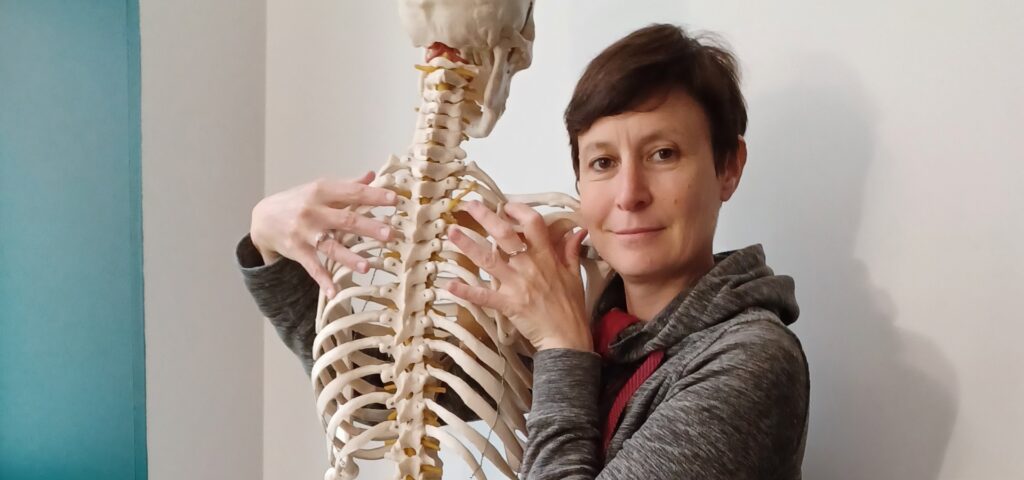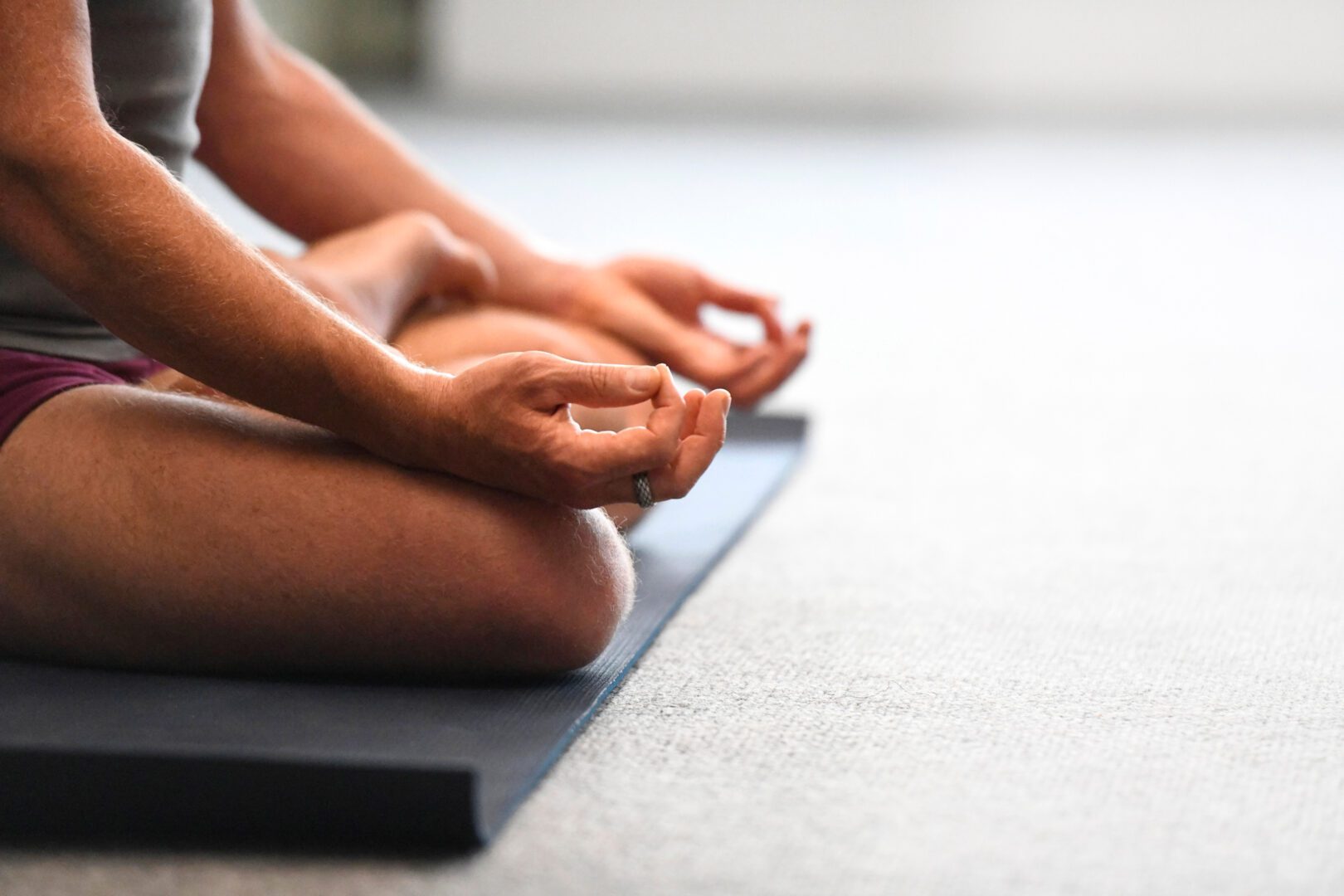
What if anatomy could be felt, not just memorised? by BWY tutor and anatomy expert, Julie Pons Woods
Many movement teachers learn anatomy as a list of muscles, joints, and Latin names. But when it comes to guiding real bodies; bodies in pain, bodies with limitations, bodies full of emotion, that map can feel flat, even irrelevant. That’s where embodied anatomy changes everything.
Embodied anatomy invites you to explore anatomy from the inside out. Instead of studying a muscle in isolation, you move it, feel it and sense how it connects to the whole. It’s an approach that awakens your proprioception, your interoception, sharpens your intuition and makes your teaching more adaptable, responsive and alive.
Functional anatomy tells us what muscles do. But embodiment helps us notice how they behave in real people, through asymmetry, breath, habits and history. For example, understanding that the diaphragm is the main muscle of breathing is useful. But feeling how your diaphragm connects to your psoas, attaches to your spine and viscera or how it changes your voice and emotions, is transformative.
The diaphragm is a perfect example of why embodied anatomy matters. Most of us learn about it as the breathing muscle. But did you know it also:
- Has visceral attachments (to the liver, stomach, pericardium…)
- Supports postural tone through fascial tension
- Enables sliding between organs for smooth internal mobility
- Plays a role in circulation and lymphatic flow
- Is deeply connected to our emotional regulation and voice?
And all of that becomes visible, felt, when we slow down and pay attention. When we embody what is learned, so that the information is not only processed by your brain, but by your whole nervous system, including the somatic one!
How can it help with your class?
Your students come to class with all sorts of bodies; injuries, trauma, stiffness, hypermobility or simply a sense of disconnection. As a teacher, it can be hard to know what’s safe, what’s helpful or even what’s relevant to their experience.
Embodied anatomy gives you:
- A deeper confidence when adapting practices
- A better understanding of student cues and feedback
- Creative tools for cueing movement in safer, more intelligent ways
- Language that empowers rather than pathologies
You’ll learn to observe, sense and guide with more clarity, without needing to fix anyone.
Here are a few ideas to bring embodied anatomy into your teaching today:
🔹 Use multisensory language. Instead of saying, ‘Engage your core.’ try ‘Feel how your breath wraps around your waist and supports your spine.’
🔹 Ask open sensory questions. For example: ‘When you move your arm, can you sense what happens under your ribs?’ This builds interoception.
🔹 Teach systems, not parts. Even when focusing on one area, like the feet, invite students to explore how the pelvis, jaw or breath respond. The body is never in isolation.
🔹 Give permission to feel. Let students know that every experience is valid, even numbness or confusion. Embodiment starts with what is, not what’s expected.
My 60hrs Embodied Anatomy training is not a passive, lecture-based training. It’s a lived, sensory and reflective process led in small groups (max 10 people) over four weekends. The course starts on Friday 12 September and there are still spaces available. You’ll be supported in applying theory to your teaching practice, whether you guide Yoga, Pilates, Somatics or Therapeutic Movement.
The course draws on the work of pioneers such as Blandine Calais-Germain, Gil Hedley, Thomas Myers, Leslie Kaminoff and Jaap Van Der Wal, weaving science and experience together into a holistic education. Your body is not a collection of parts. It’s a living conversation. Embodied anatomy helps you listen.
About BWY
The British Wheel of Yoga (BWY) is committed to sharing yoga’s transformative power and rich heritage through events and education. Guided by yoga’s principles and traditions, BWY’s mission is to enrich lives through yoga, increasing accessibility and inclusivity. Established as a registered charity in 1965 and recognised as the National Governing Body for Yoga by Sport England and Sport Wales, BWY serves more than 5000 members and is supported by a 100-strong local volunteer network and a small central team.
For all media inquiries
Natalie Lyndon, BWY PR & Communications Officer



